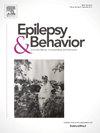Cost-of-illness review of status epilepticus in Europe
IF 2.3
3区 医学
Q2 BEHAVIORAL SCIENCES
引用次数: 0
Abstract
The objective of this review is to give an overview of published cost of illness (COI) studies on status epilepticus (SE). This review analysed studies from 2014 onwards, focusing on direct and indirect costs of SE treatment in Europe. Searches were conducted across major databases, and studies employing various methodologies were included and systematically assessed.
Six European studies from France, Germany, and Spain provided data on COI of SE treatment. Median hospital costs ranged from € 2,330 to € 6,517, and mean costs from € 5,711 to € 14,946 per admission. The median length of stay was between 5 and 14 days, with mean stays ranging from 9.2 to 21.2 days, resulting in mean daily treatment costs that ranged from € 545 to € 802. Notably, annual costs in France were estimated at € 122 million, and in Germany over € 200 million. Reported cost drivers across the studies included several factors such as very young and old age, acute-symptomatic aetiology, comorbidities, refractory or super-refractory SE, and three or more treatment steps including ventilation. Two studies also examined long-term healthcare utilisation, revealing significant ongoing resource needs.
Although recent research has improved the understanding of SE costs, data on indirect costs and long-term outcomes remain sparse. Variations in cost estimates across countries highlight the need for further studies to better understand the economic burden. Future research is needed to better assess long-term COI, quality of life, mortality and SE complications, and provide a foundation for cost-effectiveness evaluations of new treatments and interventions for SE.
欧洲癫痫状态的疾病成本审查。
本综述旨在概述已发表的有关癫痫状态(SE)的疾病成本(COI)研究。本综述分析了 2014 年以来的研究,重点关注欧洲 SE 治疗的直接和间接成本。我们在主要数据库中进行了检索,纳入了采用不同方法的研究,并对其进行了系统评估。来自法国、德国和西班牙的六项欧洲研究提供了 SE 治疗的 COI 数据。每次入院的中位住院费用从 2,330 欧元到 6,517 欧元不等,平均费用从 5,711 欧元到 14,946 欧元不等。住院时间的中位数为 5 到 14 天,平均住院时间为 9.2 到 21.2 天,平均每天的治疗费用为 545 到 802 欧元。各项研究中报告的成本动因包括几个因素,如非常年轻和年老、急性症状病因、合并症、难治性或超难治性 SE,以及包括通气在内的三个或更多治疗步骤。有两项研究还调查了长期医疗保健的使用情况,结果显示仍有大量的资源需求。尽管最近的研究提高了人们对 SE 成本的认识,但有关间接成本和长期结果的数据仍然很少。各国在成本估算方面的差异凸显了进一步开展研究以更好地了解经济负担的必要性。未来的研究需要更好地评估长期 COI、生活质量、死亡率和 SE 并发症,并为 SE 新疗法和干预措施的成本效益评估奠定基础。
本文章由计算机程序翻译,如有差异,请以英文原文为准。
求助全文
约1分钟内获得全文
求助全文
来源期刊

Epilepsy & Behavior
医学-行为科学
CiteScore
5.40
自引率
15.40%
发文量
385
审稿时长
43 days
期刊介绍:
Epilepsy & Behavior is the fastest-growing international journal uniquely devoted to the rapid dissemination of the most current information available on the behavioral aspects of seizures and epilepsy.
Epilepsy & Behavior presents original peer-reviewed articles based on laboratory and clinical research. Topics are drawn from a variety of fields, including clinical neurology, neurosurgery, neuropsychiatry, neuropsychology, neurophysiology, neuropharmacology, and neuroimaging.
From September 2012 Epilepsy & Behavior stopped accepting Case Reports for publication in the journal. From this date authors who submit to Epilepsy & Behavior will be offered a transfer or asked to resubmit their Case Reports to its new sister journal, Epilepsy & Behavior Case Reports.
 求助内容:
求助内容: 应助结果提醒方式:
应助结果提醒方式:


